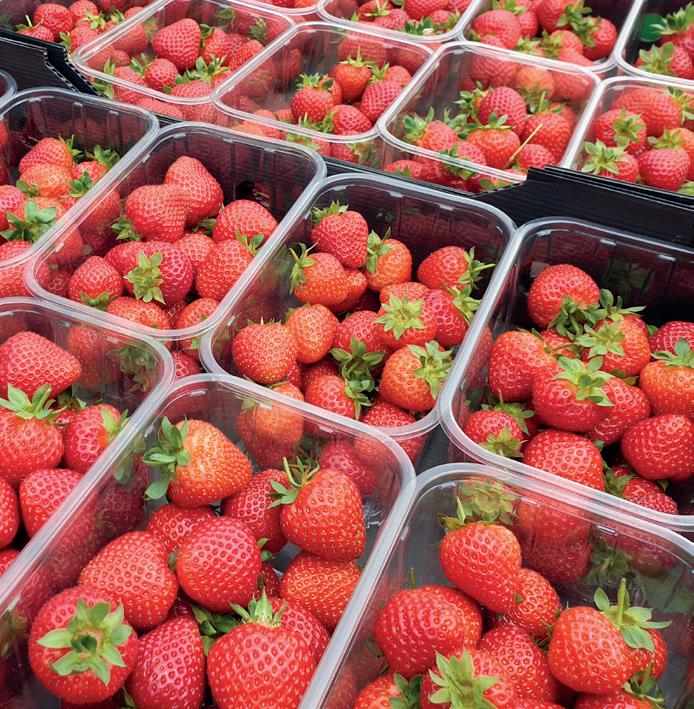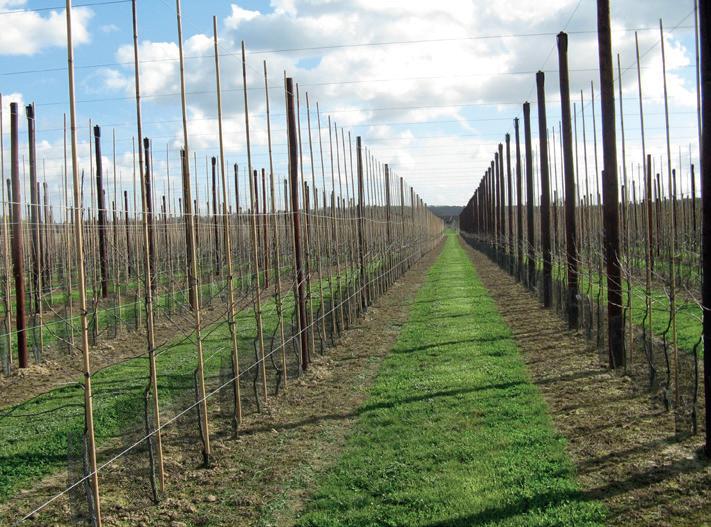
2 minute read
Matching nitrogen supply with demand in raspberry fertigation
Title: SMARTFert: Integrating nutrient demand models in AI-based sensors with precision-dosing rigs to improve resource use and productivity, and reduce waste and emissions in commercial raspberry production
Funder: Innovate UK
Advertisement
Industry partners: Netafim UK Ltd (Lead), Berry Gardens Growers Ltd, EDT DirectION
Term: August 2020 to February 2022
With the move to protected cropping of raspberry in container-grown soil-less substrates (Figure 1), where historical nitrogen fertiliser application rates are used, it is not unusual to find crops producing excessive vegetative growth. This not only leads to increased cane management costs, but also increased picking costs, as more time is taken searching and reaching for ripe fruits. Exceeding the plant’s nitrogen requirements also increases the risk of fungal disease and could also elevate the production of nitrous
The project
In this project led by Netafim UK, NIAB aimed to develop a system to match the nitrogen supply to demand in a commercially-grown raspberry crop of Malling™ Bella at NIAB’s Water Efficient Technologies (WET) Centre at East Malling. The project also aimed to measure how much nitrogen application could be reduced compared to commercially grown crops with no detrimental effect on yield or fruit quality.
Results
In the early stages of the project, variety-specific mathematical models were developed for commercial raspberry varieties to try to match the nutrient supply with the demand. In 2021, a model for Malling™ Bella was calibrated using a crop of threeyear-old container-grown plants in coir substrate. It was found that, as the season progressed and the plants developed and started cropping, the nitrogen (N) content of the plants steadily increased in both the leaf tissue and the developing fruits. This data was then used to calibrate an N-demand model for Malling™ Bella, allowing an estimate to be made of how much nitrogen to apply over the growing season, and when it was required. The model was validated in the 2022 growing season. The low-N treatment was compared to a commercial control in which Malling™ Bella received standard commercial fertigation regimes over the season. Apparent differences started to appear in July and excess vegetative growth in the control required labour to de-leaf the crop to improve access to the fruit. In contrast, no such work was required in the low N treatment. Low-N treated plants were also more resilient to the 2022 heatwaves due to the reduced canopy volume, and hence, transpirational water demand under high vapour pressure deficits. Both cane management and picking costs appeared to be reduced in the low N treatment, although a full financial comparison has not yet been carried out.

However, the low N plants started to display yellow leaf colour and by August and September, the canes were smaller and the canopies more sparse, and this resulted in the low N treatment crops producing an average of 3.5 kg per plant compared to 4.1 kg in the commercial control. Although the former yield was still higher than those for Malling™ Bella in previous years, the aim is to lower N inputs and emissions without reducing marketable yields. During the vegetative stage, the applied volume of N was lower than the scientists had anticipated, and they subsequently identified that the generic crop coefficients embedded in the model and used to predict water and subsequent N uptake in 2022 were not accurate enough for UK raspberry production. These were developed overseas for different glasshouse-grown crops in different climatic conditions and new varietyspecific crop coefficients will now be developed for UK raspberry production.
In other projects, the team has successfully employed N-demand models in raspberry and strawberry varieties and has achieved greater than 50% reduction in water use and ten times less N use, without seeing any impact on Class 1 yield or berry quality. In 2023, further experiments are planned to tweak the N demand model specifically for Malling™ Bella so that significant water and N savings can be made without adversely affecting yields.









